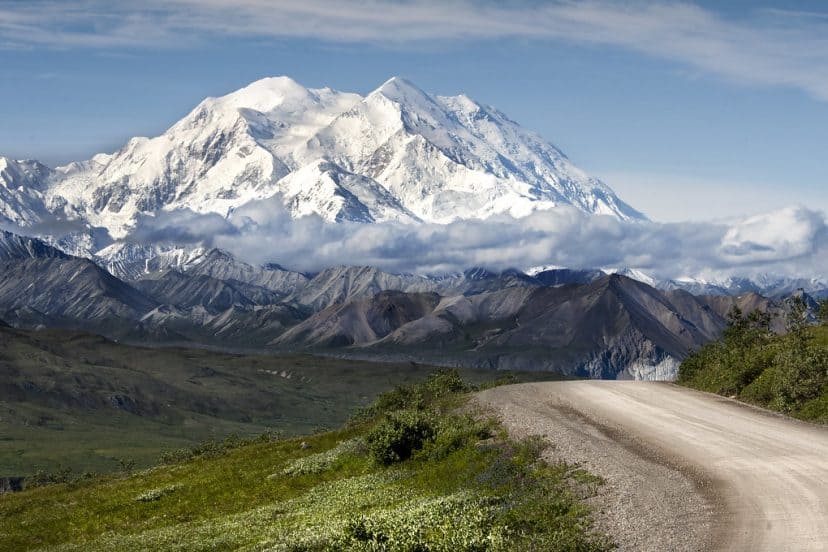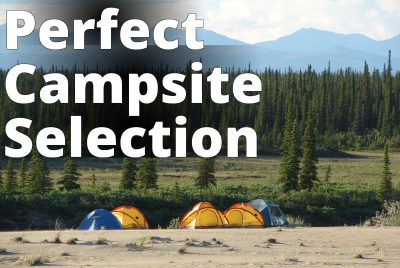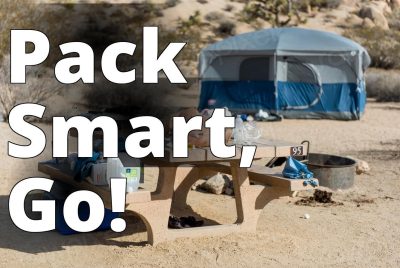Hiking And Backpacking In Denali: BackCountry Guide (2024)
Understanding Denali National Park
Denali National Park, located in the heart of Alaska Range in North America, is renowned for its spectacular views of Denali – the tallest peak and mountain in North America formerly known as Mount McKinley.
The park spans over six million acres, with different units or backcountry areas offering varying types of terrain for backpacking enthusiasts.
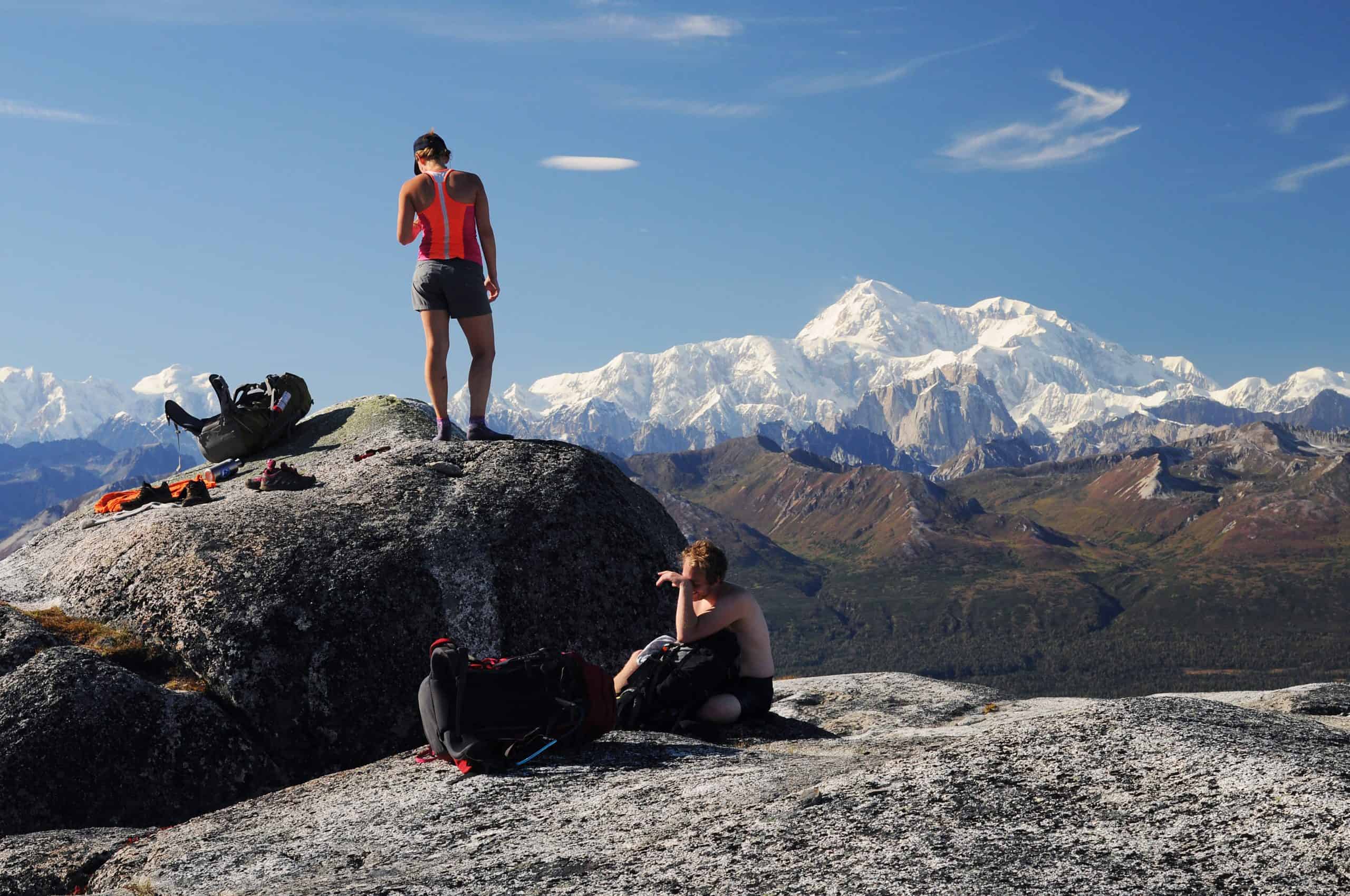
Backpacking in Denali provides an unparalleled adventure featuring river valleys, grizzly and black bears, Dall sheep and other wildlife sightings which make it one of the best ways to experience this pristine wilderness.
Before embarking on a backpacking trip through Denali’s backcountry, securing a Denali National Park backcountry permit from the Backcountry Information Center should be among your first things to do.
This process requires previous experience and knowledge about potential weather conditions you might encounter during your hike. Additionally, understanding how to read topographical maps can be beneficial when planning your route across different units like Kesugi Ridge or the Savage River area.
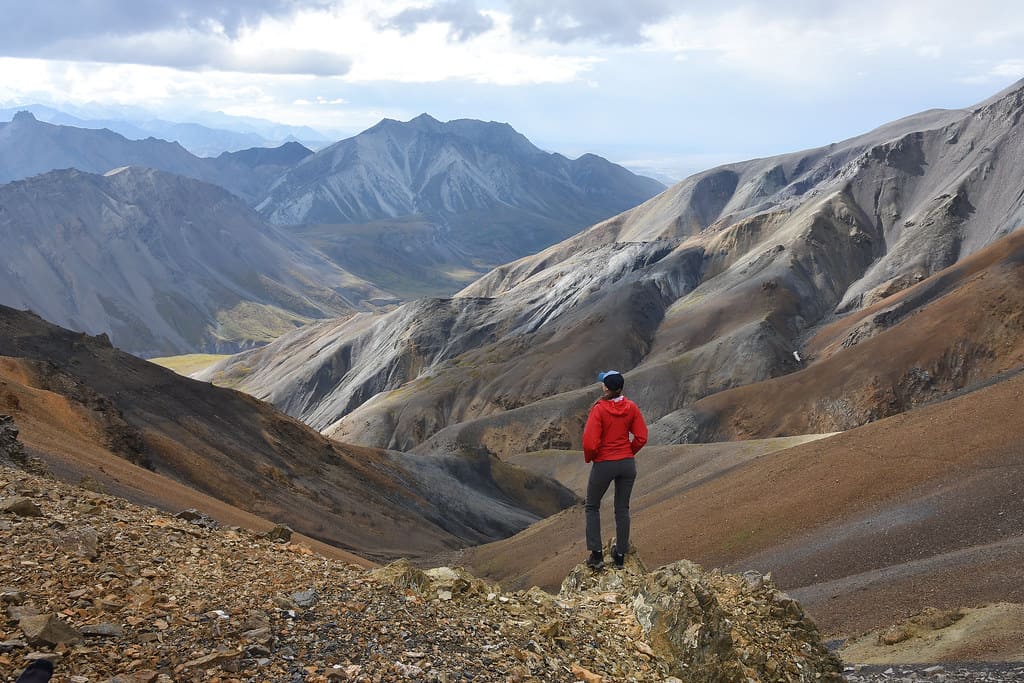
The National Park Service also advises hikers to carry essential gear such as bear spray for safety against bear encounters; water filter systems for clean drinking water; sleeping bag suitable for cold Alaskan nights; and sturdy footwear designed specifically for rough terrains including gravel bar crossings.
Park rangers are available at ranger stations throughout Denali Park Road leading up from the park entrance near Riley Creek all the way up towards Savage River Loop – an easy day hike option compared to longer treks into deeper parts of Bear Country.

They provide valuable insights based on their extensive knowledge about various aspects like best hikes suited according to individual fitness levels or spotting wildlife without disturbing them – crucial information especially if it’s someone’s first time backpacking in Denali.
Essential Gear for Wilderness Trekking
Trekking in Denali National Park requires careful preparation, particularly when it comes to gear.
One of the first things you should secure is a backcountry permit from the National Park Service. This will allow you access to different units within the park and ensure that your backpacking trip adheres to regulations designed for safety and conservation.
It’s also essential to carry topographical maps, which are invaluable for navigating through Denali’s backcountry with its varying types of terrain and river valleys.
Your choice of equipment can make or break your adventure in North America’s tallest peak region – Alaska Range.
A sturdy sleeping bag is vital as weather conditions can be unpredictable, even during summer months.

For hydration needs, a water filter is necessary due to potential contaminants in natural sources; this becomes especially crucial if you plan on exploring beyond Savage River area or venturing into Kesugi Ridge for a day hike or short hikes around Riley Creek near the park entrance.
Bear country demands respect and caution; hence carrying bear spray should be non-negotiable while trekking in Denali where grizzly bears and black bears roam freely.
Additionally, having a bear canister helps keep food safe from these animals as well as smaller critters like Dall sheep who might rummage through campsite supplies left unattended at night.
With regards to getting around within vast expanses of wilderness such as Lake Clark National Park or along Denali Park Road, utilizing services like camper bus or Alaska Railroad could prove beneficial based on your itinerary plans.
Planning Your Denali Adventure
Starting your adventure in Denali National Park requires careful planning and preparation. One of the first things to do is secure a backcountry permit from the park’s Backcountry Information Center.
This permit allows you to camp in one of the 87 different units or areas within Denali’s backcountry. It’s important to note that these permits are given out on a first-come, first-serve basis, so it’s recommended to arrive at least a day before your planned backpacking trip begins.
The national park service also suggests having several route options since not all units may be available when you apply for your permit.
Another critical aspect of planning involves familiarizing yourself with the type of terrain and weather conditions you’re likely to encounter during your trek.
Topographical maps can prove invaluable for this purpose, helping you understand river valleys and crossings along routes such as Kesugi Ridge or Savage River Loop – some of the best hikes in North America!

Additionally, make sure to pack essential gear like a sleeping bag suitable for Alaskan weather, water filter for safe hydration, bear spray for potential encounters with grizzly bears or black bears (this is bear country after all), and food stored securely inside a bear canister.
Getting into Denali National Park has its own set of logistics too.
Most visitors enter via Alaska Railroad which drops passengers off at Riley Creek near the park entrance; alternatively one could drive up through George Parks Highway which leads directly into Denali Park Road – offering spectacular views of Mount McKinley (Denali), tallest peak in North America part of majestic Alaska Range visible across vast expanses including Lake Clark National Park area nearby!
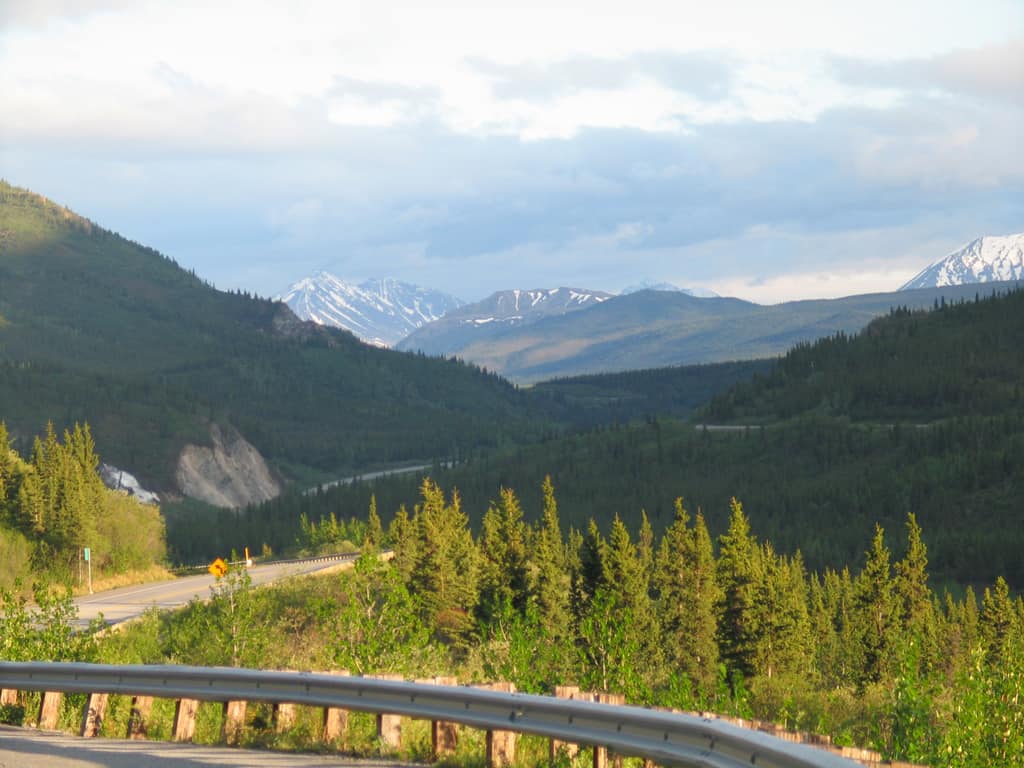
Once inside park limits however, private vehicles aren’t allowed past certain point; hence camper bus services provided by national parks help navigate deeper into wilderness where dall sheep roam freely amidst awe-inspiring landscapes leading eventually towards designated backcountry units where an unforgettable night under stars awaits every intrepid adventurer ready enough brave wilderness for first time or with previous experience.
Securing the Necessary Permits and Reservations
Before embarking on your backpacking trip in the Denali National Park, one of the first things to do is obtaining a backcountry permit. This process involves contacting the National Park Service and providing details about your planned trek such as duration, preferred backcountry units for camping, and any previous experience you might have with wilderness trekking.
Permits are crucial not only for legal reasons but also because they help park rangers ensure that visitors spread out across different units of the park instead of congregating in one area thus preserving its natural beauty.
The permit process can be completed at the Backcountry Information Center located near the park entrance or online before arrival. It’s important to note that permits are issued on a first-come-first-served basis so it’s advisable to apply early especially if you’re planning to visit during peak season.
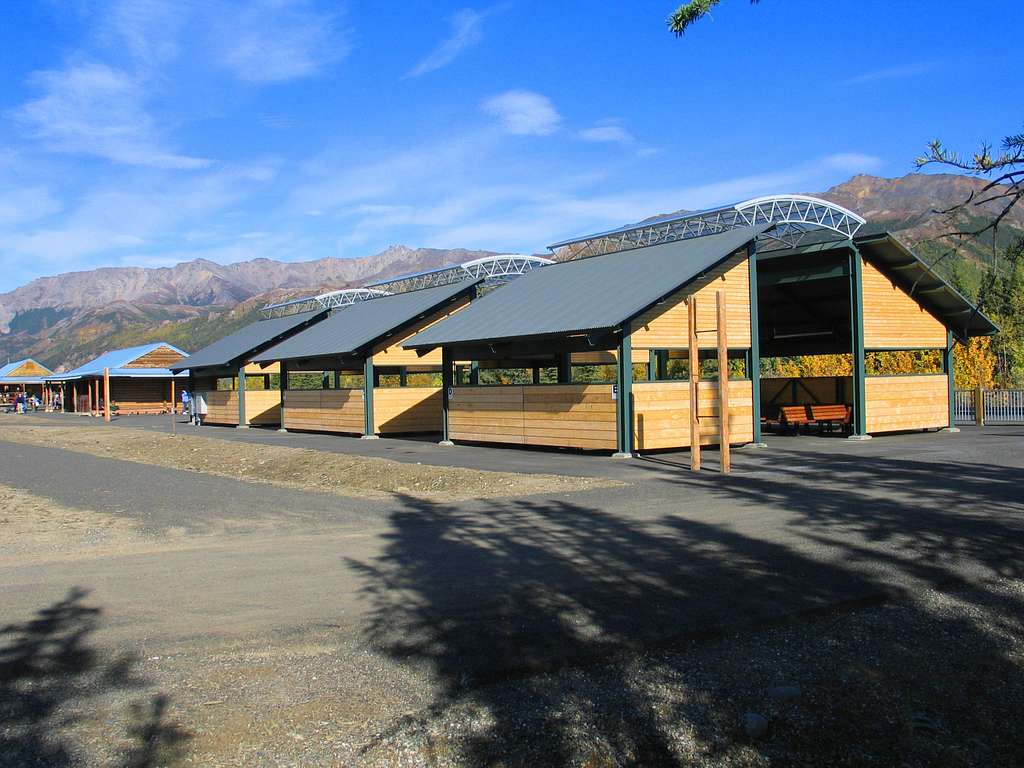
The ranger station at Riley Creek near Denali Park Road is another place where you can secure these permits while getting valuable information about weather conditions, river crossings, bear country precautions and even advice on best hikes suited for your type of terrain preference.
In addition to securing permits, reservations should also be made for transportation within Denali’s backcountry since private vehicles are limited along certain sections of Denali Park Road.
Options include taking a camper bus or using Alaska Railroad services which offer spectacular views of Mount McKinley – North America’s tallest peak nestled within Alaska Range.
Moreover, other essentials like topographical maps needed for navigation through diverse landscapes from Kesugi Ridge day hike trails to Savage River Loop short hikes; bear spray necessary when venturing into areas populated by black bears or grizzly bears.
Water filter systems required due to absence of potable sources in wild settings; sleeping bag suitable for chilly Alaskan nights and lastly a bear canister mandatory equipment designed specifically keeping safety measures pertaining Dall sheep grazing zones among others need prior arrangement before setting foot onto this majestic part of Lake Clark National Park offering some of the most stunning river valleys, gravel bars and spectacular views of Denali.
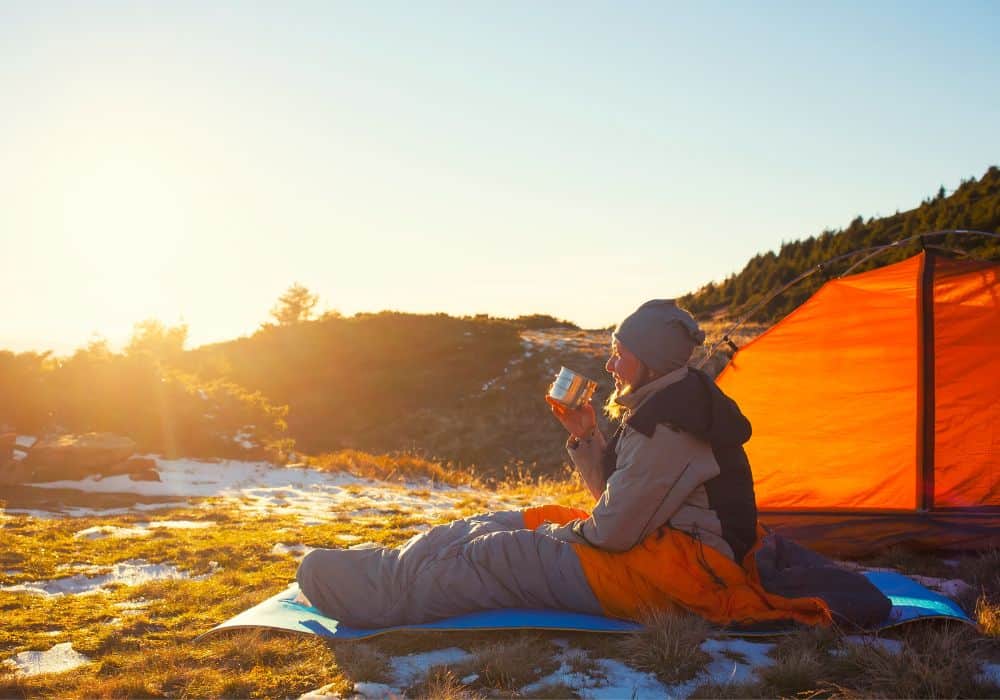
Route Options and Itinerary Planning
Planning a trek through Denali National Park involves careful consideration of the route options available. The park is divided into different units, each offering unique terrains and wildlife encounters.
Some popular choices among backpackers include Kesugi Ridge for its spectacular views of Denali, Alaska’s tallest peak formerly known as Mount McKinley; Savage River Loop for an easy day hike; and Lake Clark National Park if you wish to venture beyond the boundaries of Denali.
Topographical maps are essential tools in this process, providing detailed information about potential river crossings and type of terrain in each backcountry unit.

Securing a Denali National Park backcountry permit is one of the first things you need to do when planning your itinerary. This can be done at the Backcountry Information Center near the park entrance or online via the National Park Service website.
Keep in mind that permits are issued on a first-come-first-served basis so early application is advised especially during peak season. Also remember that certain areas such as grizzly bear country may require additional precautions like carrying bear spray and using bear canisters for food storage.
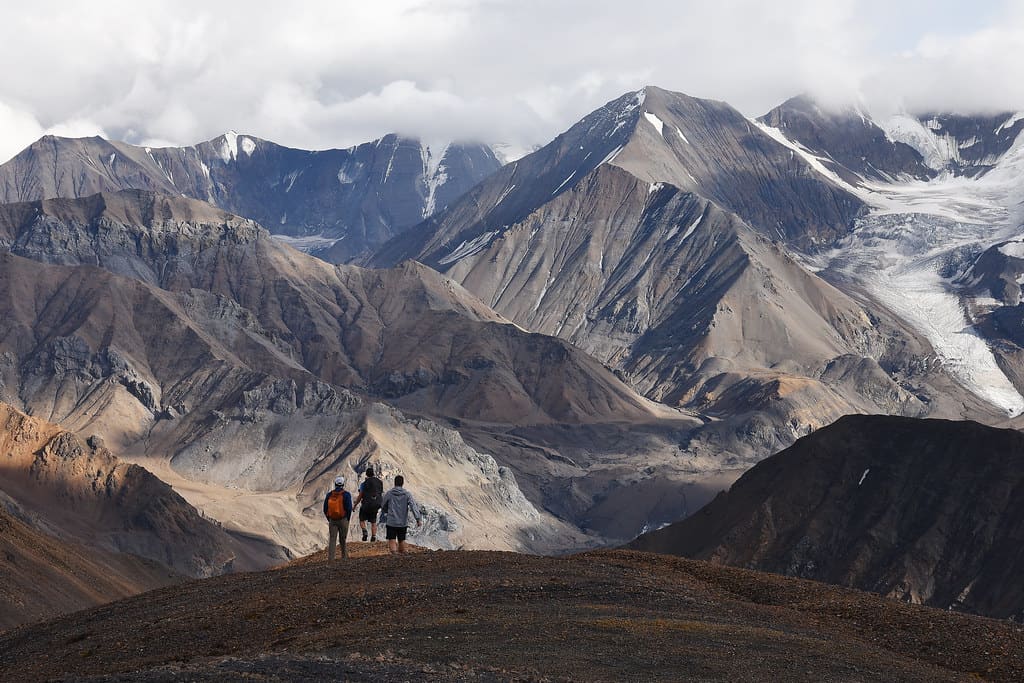
Once your permit has been secured, it’s time to plan how you’ll get around inside Denali’s vast wilderness area – which spans over 6 million acres! One option is taking a camper bus along Denali Park Road – this allows visitors to disembark anywhere along its 92-mile length for short hikes or overnight stays within designated backcountry units.
Alternatively, those with previous experience might prefer more remote destinations accessible only by air taxi or on foot from trailheads at Riley Creek or Savage River Area where black bears and Dall sheep sightings are common occurrences.
Safety Measures While Trekking in Denali
Trekking in Denali National Park is a thrilling adventure, but it also requires careful planning and preparation. One of the best ways to ensure your safety while backpacking through this beautiful part of North America is by securing a backcountry permit from the national park service.
This permit process involves attending an orientation at the Backcountry Information Center where you will be briefed on potential hazards such as river crossings, weather conditions, and wildlife encounters. You’ll also receive topographical maps indicating different units or areas within the park that are suitable for hiking.
As you traverse through Alaska’s tallest mountain range, remember that you’re venturing into bear country – home to both black bears and grizzly bears. Carrying bear spray and knowing how to use it can make all the difference should you encounter one of these majestic creatures during your trip.
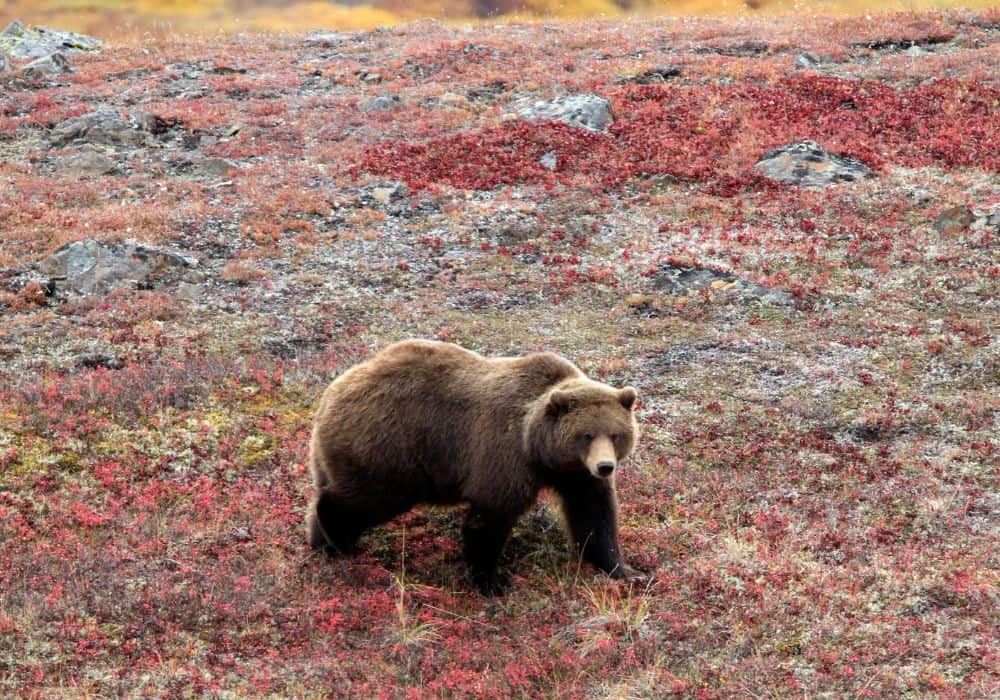
Additionally, storing food securely in a bear canister is crucial not only for your own safety but also for preserving wildlife behavior patterns. It’s important to consult with park rangers about appropriate campsite selection in various backcountry units; they can provide advice based on previous experience regarding safe spots away from animal trails or feeding areas.
When packing gear for your journey along Kesugi Ridge or any other day hike routes within Denali National Park, consider including items like a sleeping bag rated for cold temperatures (as weather conditions can change rapidly), a reliable water filter system due its remote nature with limited access to potable water sources, and sturdy footwear suitable for varying types of terrain found throughout this vast wilderness area including gravel bars and river valleys.
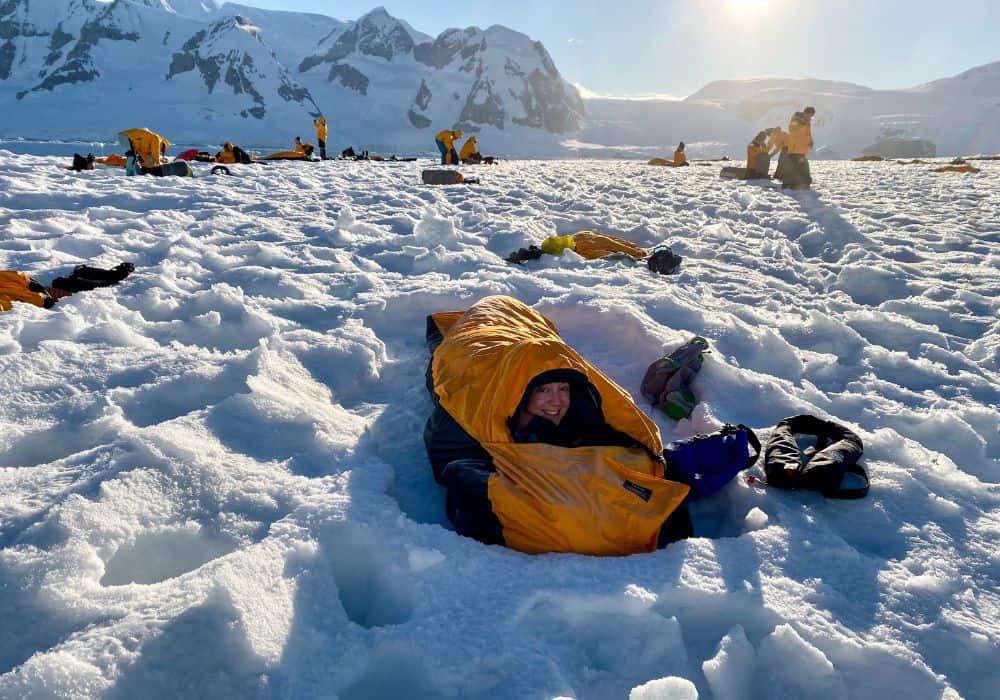
Also, keep in mind that some parts of your trek may require transportation via camper bus or even Alaska Railroad depending upon which trailhead you start from – so plan accordingly! Remember: proper preparation leads not only safer treks but also more enjoyable ones as well offering spectacular views of Denali’s breathtaking landscape.
Respecting Wildlife: A Backpacker’s Guide
Wildlife is a crucial part of the Denali National Park experience, but it’s essential that backpackers respect these animals and their habitats. The park is home to several species including grizzly bears, black bears, Dall sheep, and many more.
When planning your backpacking trip through Denali’s backcountry or even short hikes along the Savage River Loop or Kesugi Ridge day hike trails, you should prioritize learning about bear country safety measures.
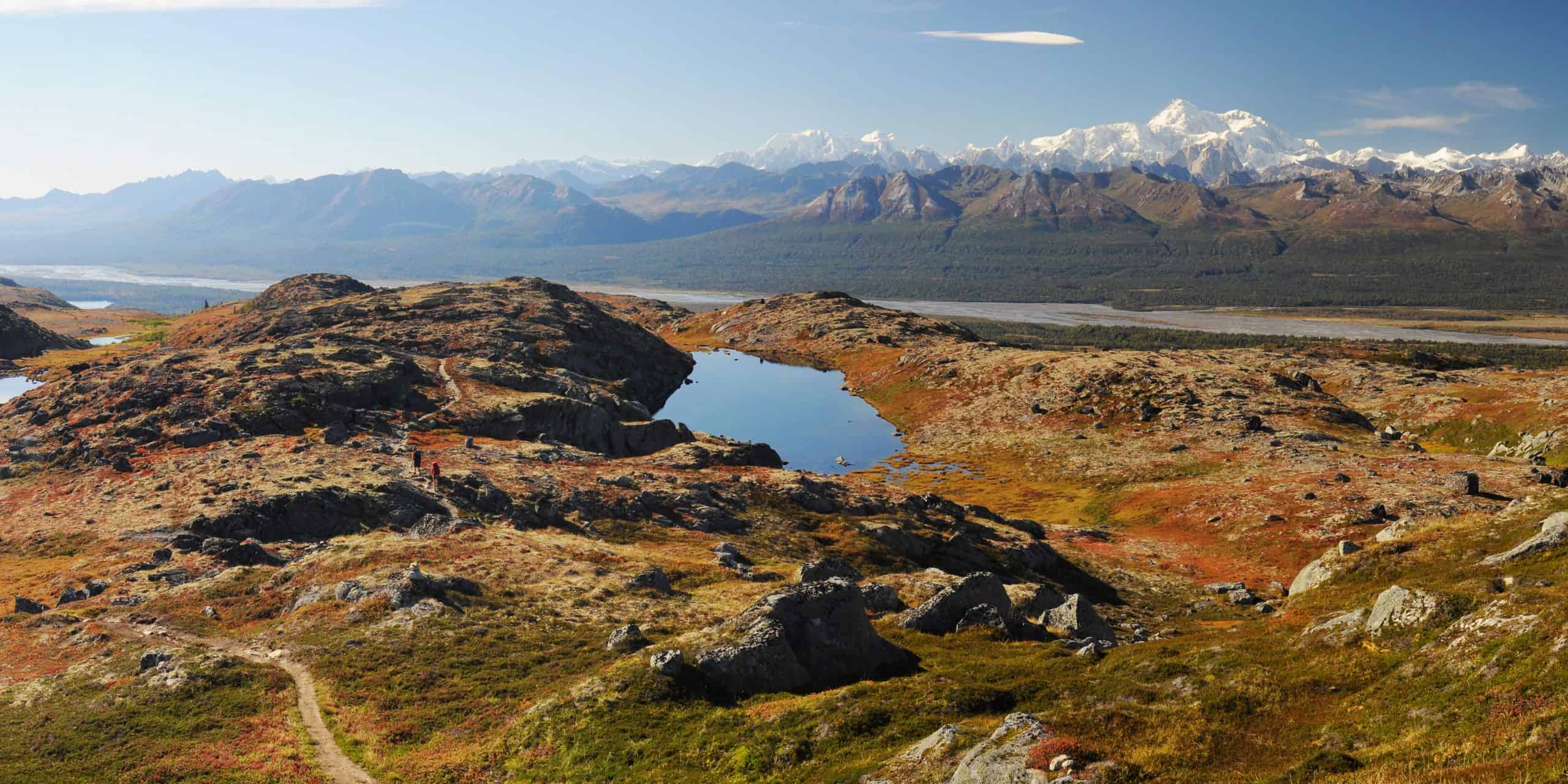
One of the best ways to ensure this is by securing a Denali National Park backcountry permit from the Backcountry Information Center at the park entrance. This permit process includes an orientation session where rangers provide information on how to safely navigate different units within the park and handle potential wildlife encounters.
They also offer advice on appropriate gear such as bear canister for food storage and bear spray for emergencies. Visitors are reminded not to approach or feed wildlife – maintaining distance ensures both your safety and that of these majestic creatures native to Alaska Range.
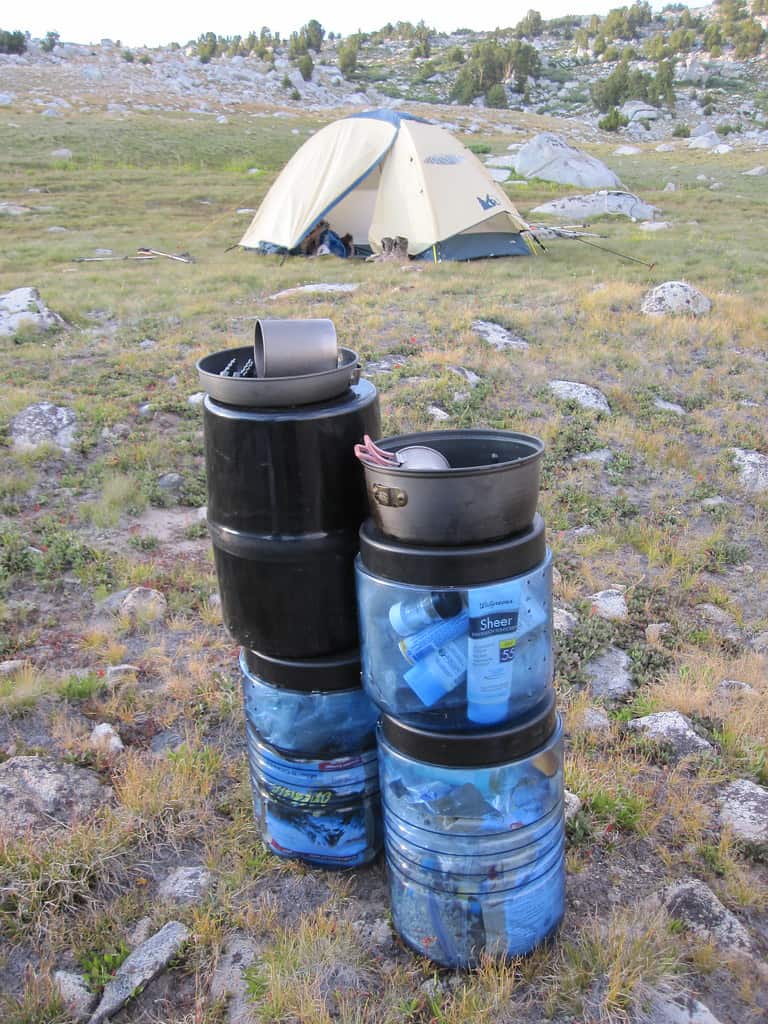
Additionally, topographical maps provided by National Park Service will guide you through varying types of terrain in this vast wilderness spanning over six million acres – from river valleys with frequent river crossings requiring caution due to changing weather conditions, up towards North America’s tallest peak Mount McKinley.
These maps also help identify potential campsite areas away from animal paths like gravel bars near rivers or open tundra regions ensuring minimal disturbance to wildlife while setting up sleeping bag for first night rest after long journey via Alaska Railroad or Camper Bus down Denali Park Road.
Leave No Trace: Principles for Sustainable Trekking
The Denali National Park backcountry permit is a crucial document for those planning to embark on a backpacking trip in the park. This permit allows adventurous souls to explore different units of the vast wilderness, including river valleys and spectacular views of Denali, North America’s tallest peak.
It also ensures that visitors are aware of their responsibilities towards preserving this pristine environment. One of these obligations includes adhering to Leave No Trace principles.
These principles aim at minimizing human impact on natural settings such as Denali’s backcountry, home to grizzly bears, black bears, and Dall sheep among other wildlife species.
The first thing any hiker should know is proper waste disposal – everything you carry into the park must be carried out again including food scraps or used bear canister.
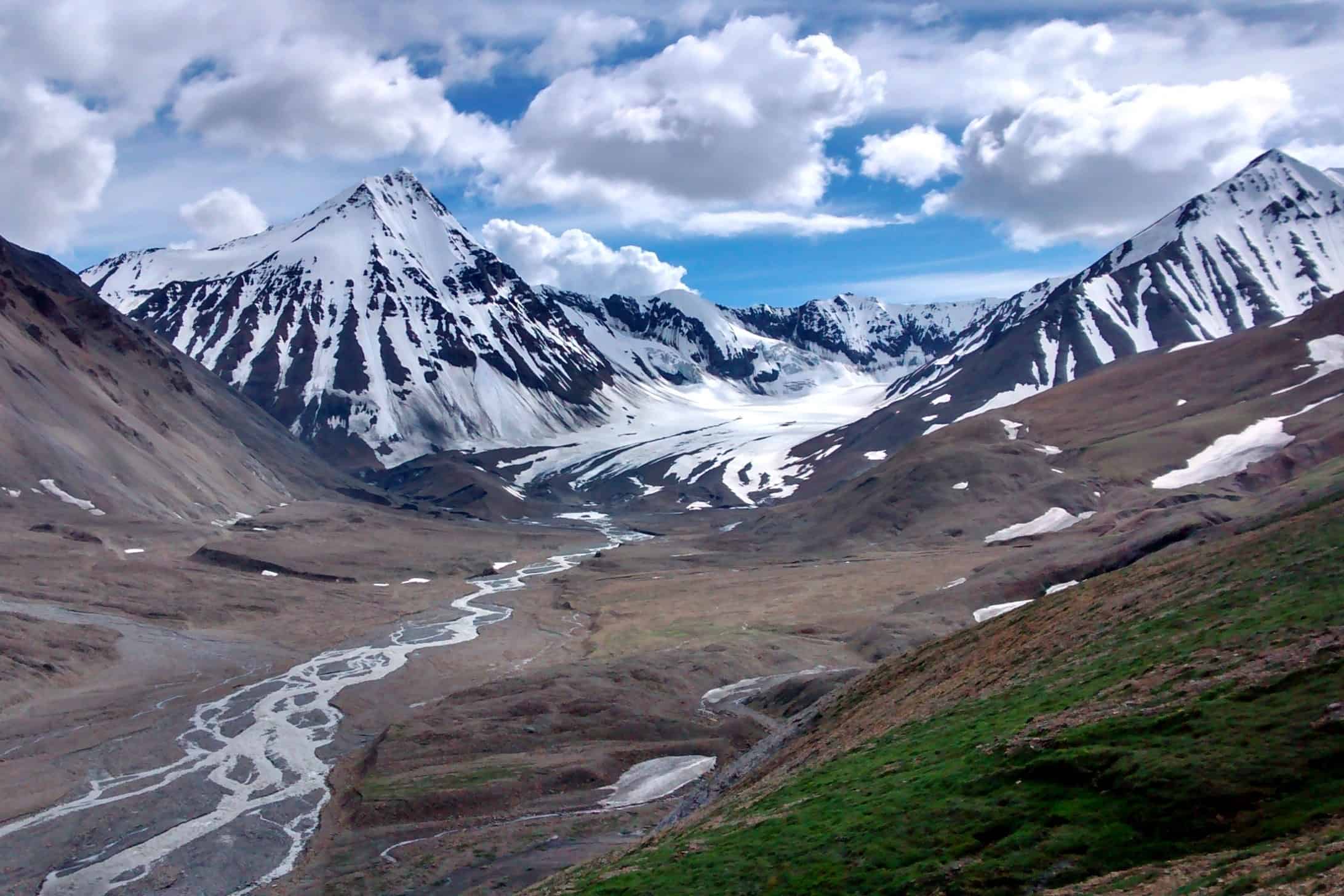
Campsite selection plays an important role too; setting up your sleeping bag at least half a mile from the park road or Alaska Railroad tracks helps reduce disturbance to wildlife while keeping you safe from unexpected encounters with animals like grizzly bears in bear country.
Another critical principle involves respecting wildlife by maintaining distance and not feeding them under any circumstances – remember it’s their home we’re visiting! Additionally, when trekking through areas like Savage River Loop or Kesugi Ridge known for river crossings, one should always use durable surfaces such as gravel bars rather than trampling over vegetation which could lead to erosion over time.
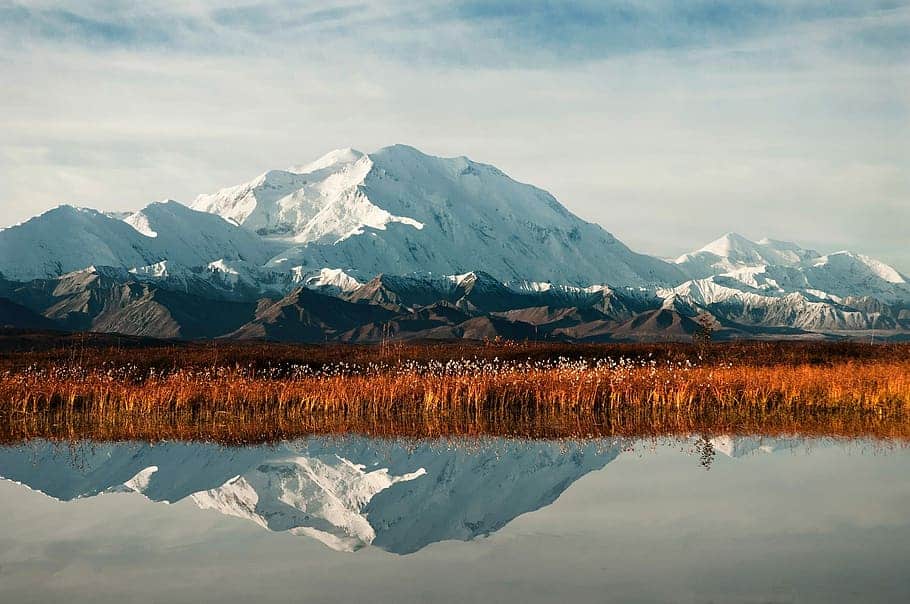
Furthermore, using topographical maps provided by National Park Service rangers at stations like Riley Creek or Backcountry Information Center will ensure that you stay on designated trails thereby reducing damage caused due to off-trail hiking.
Campsite Selection and Setup in Denali
One of the first things to consider when planning your backpacking trip in Denali National Park is securing a backcountry permit. The national park service has divided the park into different units, each with its own type of terrain and wildlife.
Some areas are known for their spectacular views of Denali, North America’s tallest peak formerly known as Mount McKinley, while others offer an easy hike through river valleys or along Kesugi Ridge. It’s important to choose a unit that matches your previous experience and fitness level. Topographical maps provided by the backcountry information center can assist you in this process.
Once you have obtained your permit and arrived at the park entrance via Alaska Railroad or other means, it’s time to select a campsite within your designated unit. This task should be approached with caution as Denali is bear country; both grizzly bears and black bears inhabit these lands alongside Dall sheep and other wildlife species native to Alaska range.
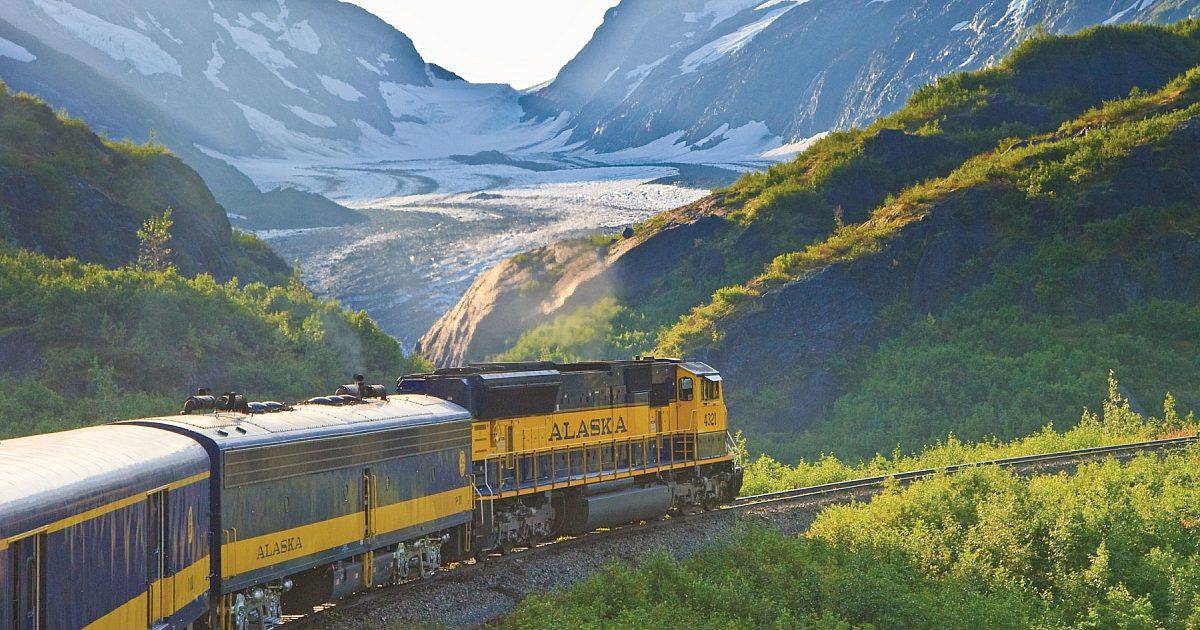
One of the best ways to avoid unwanted encounters is setting up camp away from trails and river crossings which animals use frequently for travel or drinking water supply. A good tip would be choosing sites on gravel bars where visibility is high allowing early detection of approaching animals.
Setting up camp involves more than just pitching a sleeping bag; it requires careful management of food and waste materials using bear-resistant containers also known as bear canisters provided by ranger station at Riley Creek near park entrance during permit process .
Water filter should be used for drinking water sourced from rivers or lakes around campsites ensuring safety against potential contamination considering health risks involved in wilderness trekking especially if it’s your first time visiting such remote areas like Savage River area or Lake Clark National Park located south-western part of state offering similar experiences but different units compared to Denali’s backcountry .
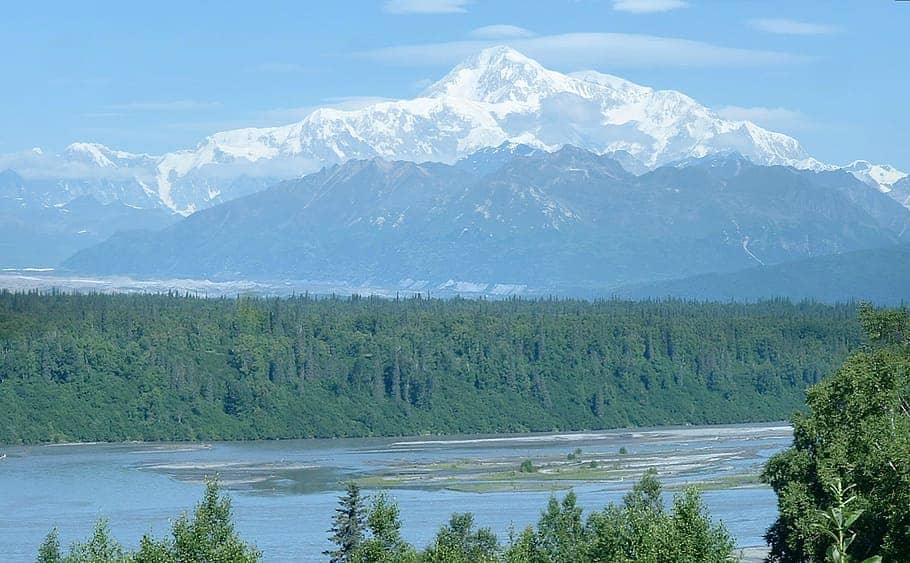
Also remember always check weather conditions before heading out on day hikes or short hikes even if they seem benign initially sudden changes could lead unexpected situations demanding immediate action from park rangers or backcountry rangers.
Food and Water Management in the Wilderness
Managing food and water effectively is crucial when embarking on a backpacking trip in Denali National Park, the tallest peak in North America. The Alaska Range offers spectacular views of Denali but also presents challenges such as river crossings that can affect your supplies.
One of the best ways to ensure clean drinking water throughout your journey is by carrying a reliable water filter. This will allow you to refill from various sources without worrying about potential contaminants.
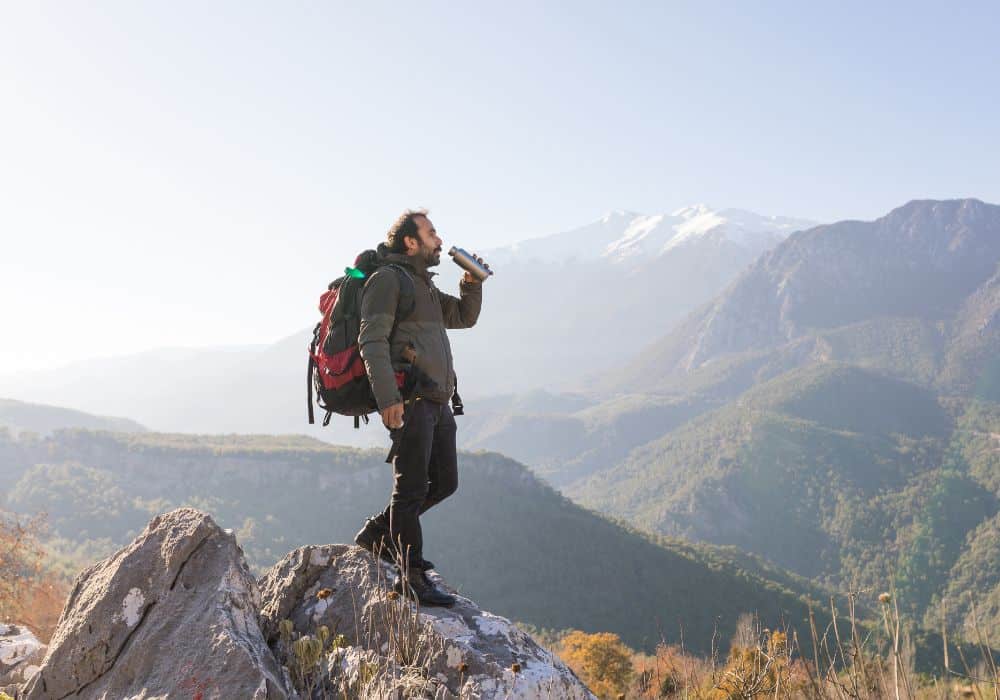
Furthermore, it’s important to note that this area is bear country, with both grizzly bears and black bears inhabiting different units within the park boundaries. Hence, every camper bus entering the park entrance must carry bear spray for protection and a bear canister for storing food securely away from wildlife.
It’s recommended to get advice from backcountry rangers or at the Backcountry Information Center before setting off on any day hike or longer trek like Kesugi Ridge or Savage River Loop.
When planning your meals, consider lightweight but high-energy options that don’t require much preparation time. Remember that you’ll need more calories than usual due to increased activity levels and potentially harsh weather conditions – it’s not an easy hike after all!
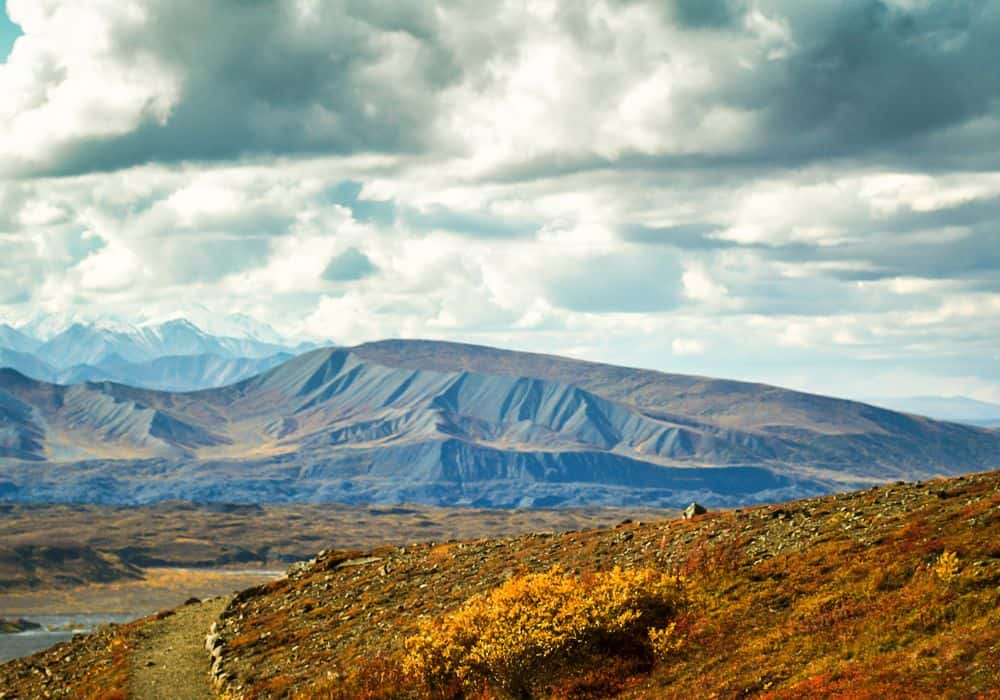
Also, take into account where you’ll be sleeping each night; if camping in backcountry units rather than staying near Riley Creek at the visitors center, factor this into how much food you’re able to carry comfortably along with other essential gear like topographical maps and a sleeping bag.
Weather Conditions and Best Time to Visit
Denali National Park, located in the Alaska Range of North America, is home to Mount McKinley, the tallest peak on the continent. The park offers a variety of experiences for backpacking trips from short hikes along Savage River Loop to longer treks like Kesugi Ridge day hike.
However, it’s crucial to understand that weather conditions can significantly impact your adventure. The area is known for its unpredictable and rapidly changing climate which can range from sunny and warm days to sudden cold snaps with snowfall even during summer months.
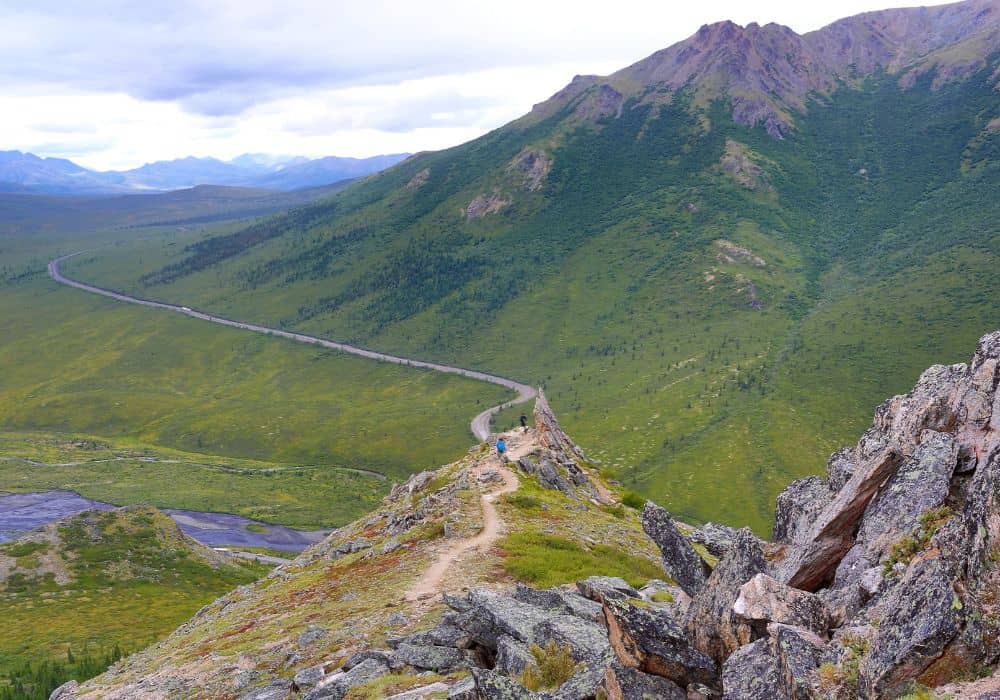
The best time to visit Denali largely depends on what you want from your trip. If you’re looking forward to spectacular views of Denali’s backcountry and wildlife spotting such as grizzly bears or Dall sheep, late June through early September would be ideal as it provides extended daylight hours and relatively warmer temperatures.
During this period, one could also indulge in river crossings at different units across the park using a camper bus service provided by National Park Service or take an easy hike near Riley Creek while enjoying splendid views of river valleys.
It’s important however not just rely on previous experience but also consult with backcountry rangers at Backcountry Information Center about current weather patterns before setting out on any trekking excursion within Denali National Park boundaries.
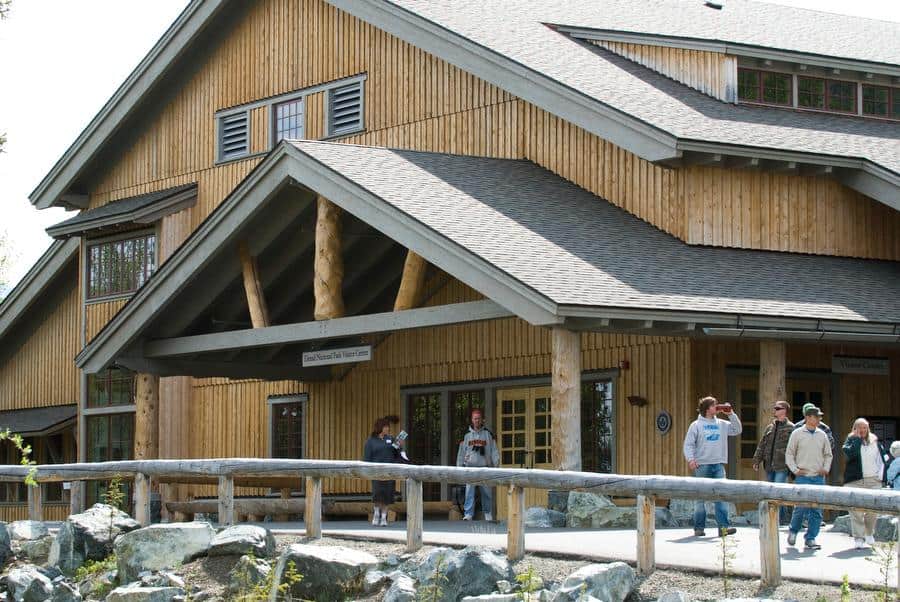
Proper preparation including securing a backcountry permit national parks require for overnight stays outside designated campgrounds ensures safety while exploring bear country areas such as Lake Clark National Park or sleeping under stars amidst vast Alaskan wilderness atop gravel bar sites.
Away from main park entrance road access points reachable via Alaska Railroad network connecting various parts of state together creating opportunities for first-time visitors experiencing pristine nature firsthand without compromising their comfort levels too much thanks partly due availability basic amenities like water filter systems helping maintain hygiene standards among other things making overall journey memorable one indeed!
Health and Fitness Preparation for High Altitude Trekking
High altitude trekking in Denali National Park requires a significant amount of physical preparation.
The park’s terrain, which includes the tallest peak in North America, Mount McKinley, offers challenges such as river crossings and steep inclines that can be strenuous even for seasoned hikers.
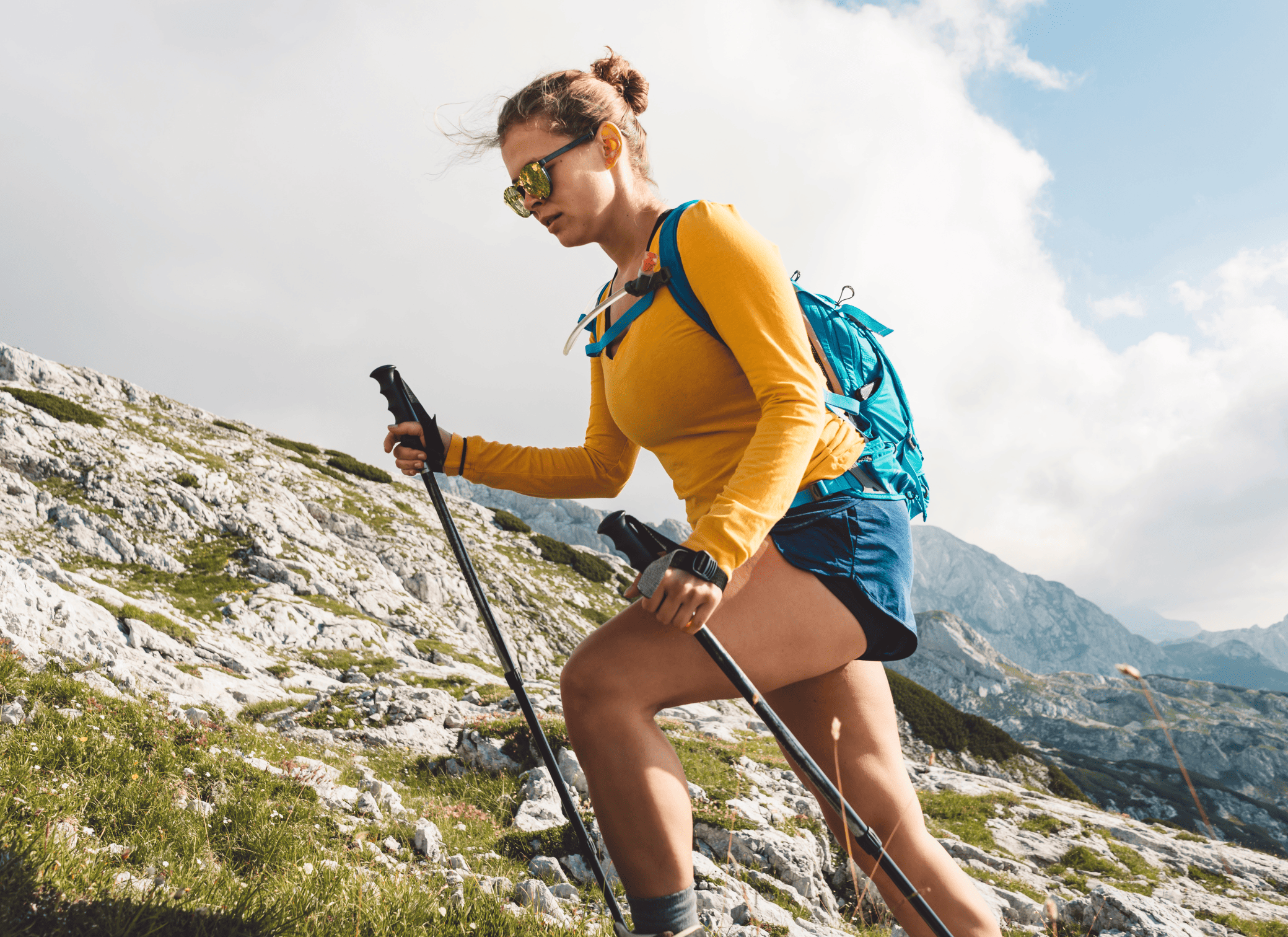
Prior to embarking on your backpacking trip, it is essential to engage in regular cardiovascular exercises like running or cycling to build endurance. Strength training focusing on core muscles will also prove beneficial when carrying a heavy backpack across different units of the park.
In addition to physical fitness, understanding how to navigate through Denali’s backcountry is equally important for a successful trek. Topographical maps are invaluable tools for plotting routes through the diverse type of terrain found within the park boundaries from Kesugi Ridge day hike trails to Savage River loop paths.
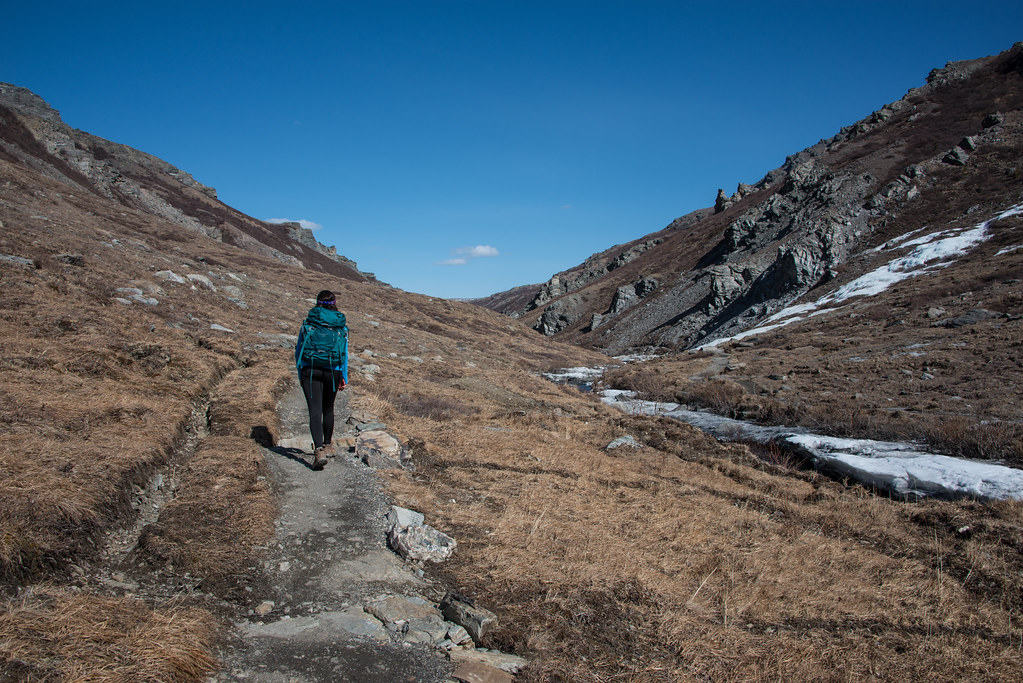
Knowledge about river valleys and best ways around difficult sections can save time and energy during your journey. First-time visitors should consider short hikes before attempting more challenging ones like those leading up Alaska Range or toward spectacular views of Denali.
Moreover, preparing for potential encounters with wildlife including grizzly bears and black bears is crucial while exploring bear country areas like Lake Clark National Park or Riley Creek.
Bear spray should be part of every hiker’s gear along with a bear canister for food storage at night; both items are recommended by national parks’ services including Denali Park Rangers who provide valuable advice based on their previous experience dealing with these majestic creatures in their natural habitat.
Awareness about other local fauna such as Dall sheep could add an enriching dimension to your wilderness adventure too.
Reflecting on the Denali Backpacking Experience
The experience of backpacking in Denali National Park is a journey that can leave an indelible mark on the soul. From securing your backcountry permit to navigating different units, every step contributes to the thrill and excitement of this adventure.
The first time you lay eyes on Mount McKinley, North America’s tallest peak, it’s hard not to feel a sense of awe at its majesty. As you traverse through river valleys or hike up Kesugi Ridge for spectacular views of Denali, there are moments when nature’s grandeur becomes almost overwhelming.
During the day hike or short hikes across various terrains, one encounters diverse wildlife like grizzly bears and black bears which make bear country their home along with dall sheep grazing peacefully on steep slopes. Bear spray becomes a constant companion as does the water filter for those refreshing breaks by pristine streams.
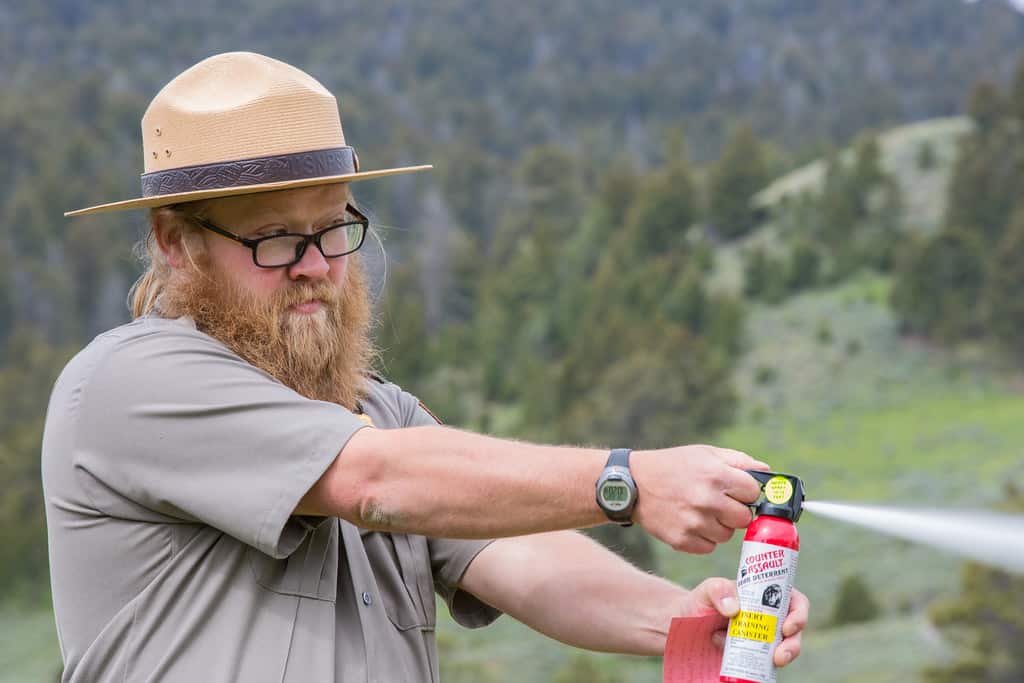
Sleeping bag nights under Alaska’s starlit skies provide ample opportunities for quiet reflection while listening to whispers from distant glaciers in the Alaska Range. Backcountry rangers offer invaluable advice at ranger stations along Denali Park Road about safety measures during river crossings and best ways to respect wildlife – insights gained from previous experiences.
Navigating through Denali’s backcountry requires topographical maps but also an openness towards unexpected surprises – be it spotting a rare bird species near Savage River Loop or waking up to find fresh tracks right outside your campsite set up perhaps in backcountry units around Riley Creek or Gravel Bar area!
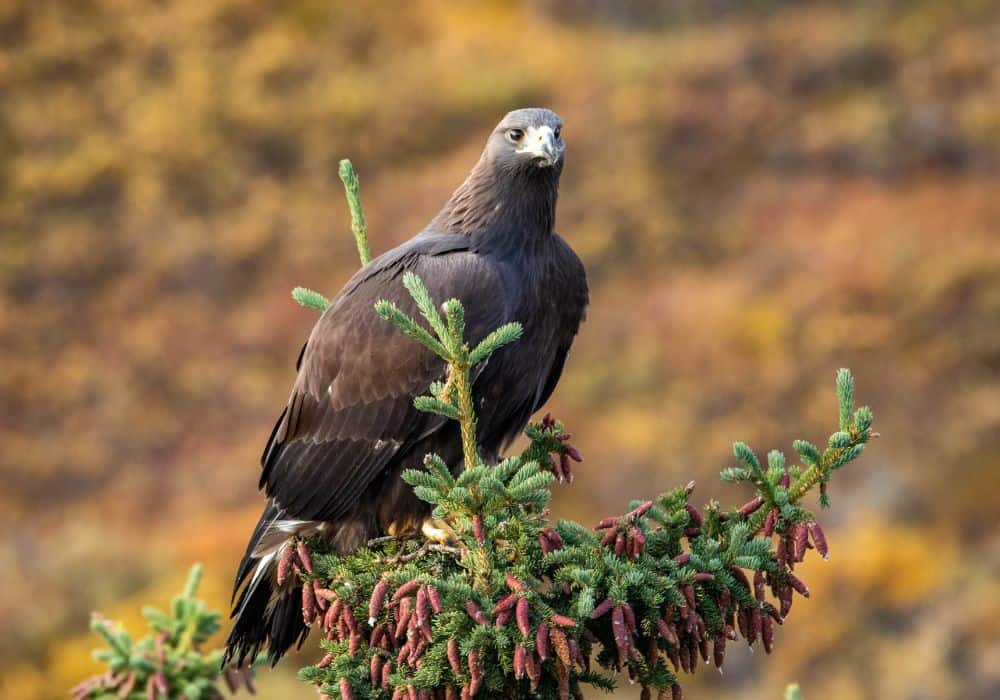
A camper bus ride from park entrance takes visitors closer into heartland where weather conditions might change rapidly yet each turn offers breathtaking panoramas unique only to this part of world – truly making it one among best hikes anyone could undertake.
What is unique about Denali National Park?
Denali National Park is home to North America’s tallest peak, Denali, and covers over six million acres of wilderness. The park is known for its diverse flora and fauna and offers a unique backpacking experience.
What are some essential gear items for wilderness trekking in Denali?
Essential gear for wilderness trekking in Denali would include a sturdy backpack, weather-appropriate clothing, hiking boots, camping gear, navigation tools, food, water, and emergency supplies.
How can I plan my Denali Adventure?
Planning your Denali Adventure involves researching the park, understanding its various routes, securing necessary permits, and preparing both physically and mentally for the trek.
Do I need any specific permits or reservations for backpacking in Denali?
Yes, you do need specific permits for backpacking in Denali National Park. These include a backcountry permit and possibly camping reservations, depending on your chosen route.
What are some popular route options for backpacking in Denali?
There are numerous route options for backpacking in Denali, and the choice largely depends on your experience level and preferences. Some popular routes include the Wonder Lake to McGonagall Pass and the Polychrome Mountain routes.
How can I ensure my safety while trekking in Denali?
You can ensure your safety by planning your route carefully, understanding the wildlife, carrying necessary safety equipment, and following all park rules and guidelines.
How can I respect the wildlife while backpacking in Denali?
You can respect the wildlife in Denali by maintaining a safe distance, not feeding the animals, and minimizing your impact on their environment.
What are the principles of Leave No Trace trekking?
The Leave No Trace principles include preparing for your hike, travelling and camping on durable surfaces, disposing of waste properly, leaving what you find, minimizing campfire impact, respecting wildlife, and being considerate of other visitors.
What should I consider when selecting a campsite in Denali?
When selecting a campsite in Denali, consider factors like proximity to water sources, terrain, potential wildlife encounters, and regulations about where you can camp in the park.
How should I manage food and water in the wilderness?
You should carry enough food and water for your trip, store food securely to avoid attracting wildlife, and purify any water you collect from natural sources.
When is the best time to visit Denali for backpacking?
The best time to visit Denali for backpacking is typically from late May to early September, when the weather is most favorable.
How should I prepare health-wise for high altitude trekking in Denali?
Preparing for high altitude trekking involves physical training, proper nutrition, acclimatization to altitude, and understanding the signs of altitude sickness.
How would you summarize the Denali backpacking experience?
The Denali backpacking experience is a challenging but rewarding adventure that offers stunning views, an abundance of wildlife, and the chance to explore one of America’s most beautiful landscapes.

